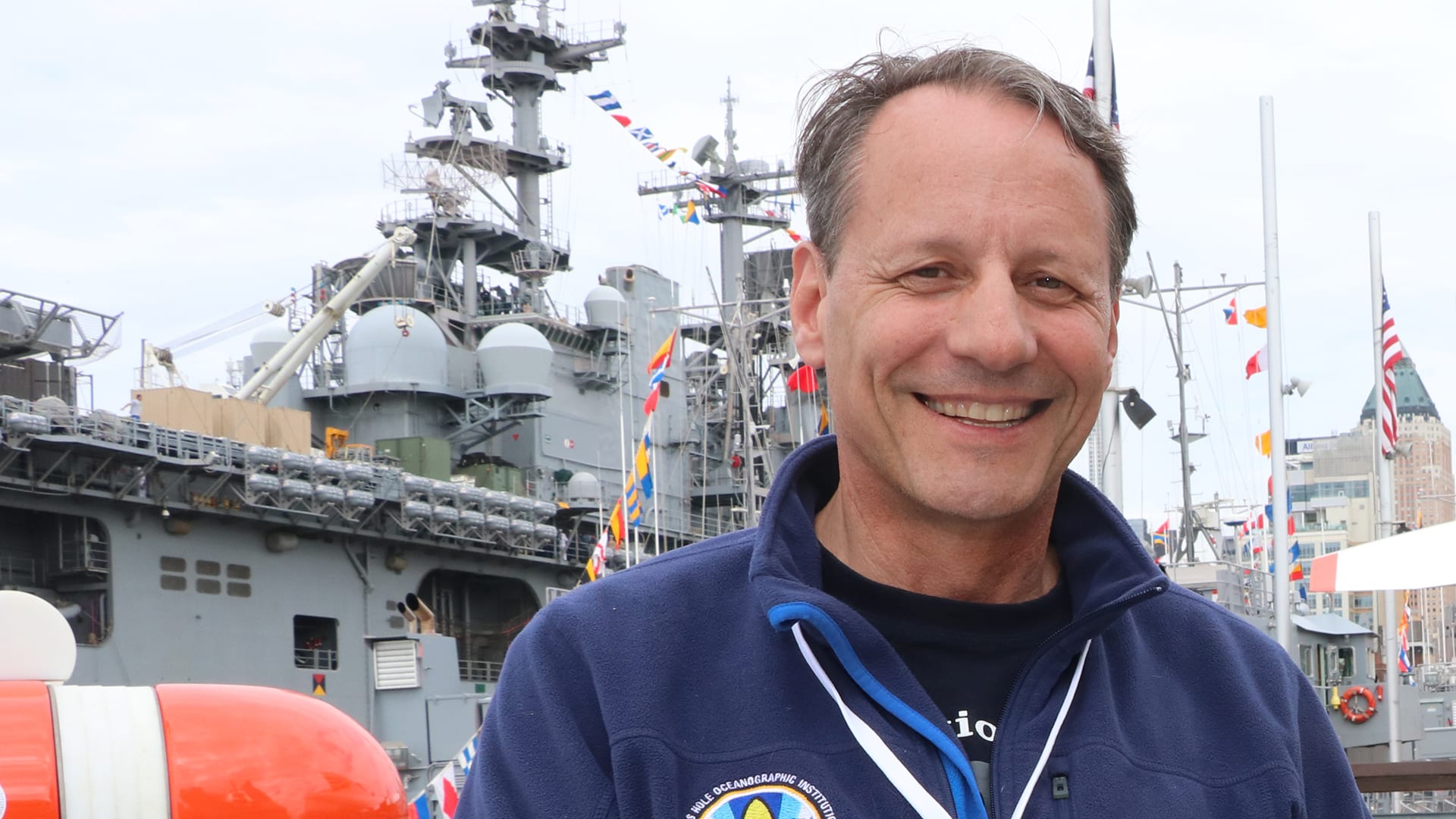Imagining new vehicles for exploration
A conversation with WHOI Engineer Andy Bowen
By Véronique LaCapra| May 2, 2019

Andy Bowen is the director of the National Deep Submergence Facility at WHOI. He has worked at Woods Hole Oceanographic Institution for more than 30 years, engineering underwater robotic vehicles. He’s the kind of guy who wakes up in the middle of the night unable to go back to sleep, because he’s just too excited about a solution he’s just imagined for a new robotic invention—and the fantastic things it could help his scientific partners discover. Bowen has participated in dozens of oceanographic cruises to explore the ocean, often learning the hard way that the ocean is as unforgiving as it is challenging.
Why don’t we know more about the ocean twilight zone?
I’ve spent most of my career sending robots to work on the seafloor. We have closed our eyes and gone to sleep—sometimes literally!—as we plunged through the ocean’s midwater. Now what we need to do is to open our eyes, look a lot more carefully at what’s there, what they are doing and how this vast unexplored layer “works” as a critical part of our ocean ecosystem. To do that will require new technological solutions that cover larger areas for longer then ever before.
Why is WHOI uniquely suited to explore this region?
One of WHOI’s strengths is that we excel in both research and engineering—and combining the two in the service of scientific discovery. As an engineer, I love when I get a call from a scientist colleague who asks, “Hey, is there any way we can do X?” And my imagination gets to work with that scientist’s to produce something unexpected that can allow us to understand the ocean in a new way. The rewards are immediate, science is moving at an increasing pace and I think we all feel a sense of urgency when it comes to the Twilight Zone. To achieve the “audacious” objectives will require the project to accelerate those kinds of collaborations and lead to discoveries that we can’t even imagine.
What challenges do you see ahead as WHOI develops robotics for the ocean twilight zone?
The twilight zone is such a vast part of the ocean, which really demands a different way of investigating and transporting our instruments and making measurements. The challenge will push our technology in new directions and force us to develop new solutions, it is a very exciting time and I am sure this project will shine a light on our future. The pace of change for the ocean demands bold new solutions. Being part of the OTZ project is being part of the future, even after all my years of working in the ocean, projects like this inspire the very best we can do.
What do you hope will come out of this project?
For me, the exciting thing is that we are doing something that’s not in our comfort zone. We’re really reaching here. We want to produce information that revolutionizes our understanding of a little-known part of the ocean. We want to make the ocean transparent and engage people in a way that helps them understand and appreciate it. And maybe by doing that, we can help to better inform how we value its resources and maybe change the outcome, for the ocean and for all of us.
